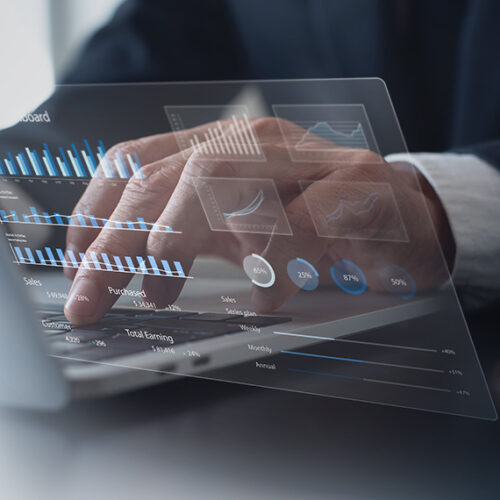Definition
A General Ledger (GL) is the master accounting record that consolidates all financial transactions of a company and its subsidiaries into a complete, balanced system of accounts. It consolidates every asset, liability, equity, income, and expense into one system, acting as a single source of accounting truth.
All subledgers (e.g., billing, accounts receivable, accounts payable, payroll, revenue) ultimately roll up to the GL, ensuring every dollar has a trail.
Components of a General Ledger
The GL is systematically broken down into accounts and their balances, structured by the Chart of Accounts (CoA). CoA provides the systematic framework for classifying every transaction and typically includes seven primary account categories:
- Asset accounts – cash, receivables, inventory, fixed assets
- Liability accounts – payables, accrued expenses, deferred revenue
- Equity accounts – Common stock, retained earnings, additional paid-in capital
- Operating revenue accounts – Subscription revenue, professional services, usage-based billing (relevant for SaaS & AI)
- Operating expense accounts: Salaries, rent, software costs.
- Non-operating revenue accounts: Interest income, investment gains
- Non-operating expense accounts: Interest expense, foreign exchange losses
This structure ensures that every dollar flowing through the business has a designated home in the GL.
How It Works: The Double-Entry Accounting
Every transaction in the GL follows the double-entry system. A method built on the Duality Principle:
| Assets = Liabilities + Equity |
Each transaction is recorded as a journal entry. Every journal entry results in equal debit and credit entries across at least two accounts, maintaining the balance of the accounting equation.
For example, when a SaaS company collects $12,000 for an annual subscription:
- Debit: Cash (Asset) = +$12,000
- Credit: Deferred Revenue (Liability) = +$12,000
This duality ensures that the equation always balances, and no transaction distorts the company’s financial position.
Journal Entries are therefore the chronological record of each transaction, including the date, accounts affected, amounts debited or credited, and a description. These entries flow from subledgers (AR, AP, Revenue) into the GL.
Why It Matters: 4 Core Functions
In short, the General Ledger (GL) is the foundation for all financial reporting and compliance.
- Record all financial transactions in a single, auditable system
- Serve as the central repository for accounting data
- Support financial statement creation (P&L, Balance Sheet, Cash Flow)
- Enable audit readiness and compliance (ASC 606, SOX)
The SaaS General Ledger Challenge
SaaS companies face unique GL complexity due to deferred revenue, multi-element arrangements, usage-based billing, and ASC 606 revenue recognition schedules. A single $50,000 contract might generate 15+ journal entries across 12+ months.
The main challenge in this environment is keeping the operational billing and revenue systems synchronized with the core GL (e.g., NetSuite, QuickBooks, Xero, Sage Intacct). When that sync breaks, controllers are forced into manual reconciliations, lengthening close cycles and increasing audit risk.
Ordway as a True Subledger for SaaS
Ordway functions as a true revenue and billing subledger that maintains granular journal entries for every transaction like subscription changes, usage charges, renewals, upgrades, credits, and refunds. It automatically applies ASC 606 logic, calculates deferred and recognized revenue, and generates compliant journal entries in real time.
Rather than forcing controllers to manually map billing data to GL accounts, Ordway seamlessly integrates with GL systems like NetSuite, QuickBooks, Xero, and Sage Intacct.
Each journal entry pushed to the GL includes full transaction detail, supporting documentation, and audit-ready metadata. Controllers gain complete visibility into revenue waterfalls, deferred balances, and performance obligations without spreadsheet reconciliations.
Example: Subscription Lifecycle in the GL
A SaaS company with $60M ARR signs a $36,000 annual contract on January 1:
January 1 – Invoice and Payment:
- Debit: Cash (1000) +$36,000
- Credit: Deferred Revenue (2400) +$36,000
January 31 – Monthly Revenue Recognition:
- Debit: Deferred Revenue (2400) -$3,000
- Credit: Subscription Revenue (4000) +$3,000
Ordway Process:
- Billing subledger records the invoice and payment
- Revenue subledger applies ASC 606 recognition schedule
- Journal entries auto-post to NetSuite GL accounts 1000, 2400, and 4000
- Month-end close completes in hours, not days
Takeaway
The GL is the single source of accounting truth, but only if data from subledgers flows in accurately and automatically. For a growing SaaS company, automating this connection isn’t optional; it’s what keeps financials audit-ready and the close process fast.
Frequently Asked Questions
What are the benefits of automating general ledger entries?
Automating general ledger entries significantly enhances financial accuracy by minimizing manual errors and ensuring consistent data. It frees up accounting teams from repetitive tasks, allowing them to focus on strategic analysis rather than data entry. This automation also provides more timely financial insights, crucial for agile decision-making and efficient month-end close processes.
What are general ledger best practices for subscription businesses?
For subscription businesses, general ledger best practices revolve around precise revenue recognition, particularly for deferred revenue and recurring billing models. It’s crucial to implement systems that automatically handle subscription lifecycles, prorations, upgrades, and downgrades accurately. A well-structured chart of accounts supporting subscription-specific accounts ensures clear financial visibility and compliance.
How can an automated general ledger streamline accounting processes?
An automated general ledger streamlines accounting by eliminating manual data input across various financial modules. It integrates seamlessly with billing, accounts receivable, and accounts payable, ensuring all transactions flow directly into the GL without intervention. This automation accelerates month-end close, reduces reconciliation efforts, and provides a unified, accurate financial record.
What are general ledger reconciliation challenges and their solutions?
General ledger reconciliation often faces challenges from manual data entry errors, disparate systems, and the sheer volume of transactions, leading to time-consuming discrepancies. The solution lies in leveraging intelligent automation that continuously validates entries and integrates data from all sub-ledgers. This approach provides real-time visibility into balances, drastically simplifying the reconciliation process and ensuring accuracy.
What is the difference between a Chart of Accounts and a General Ledger?
The Chart of Accounts (COA) is a categorized list of all accounts an organization uses to record financial transactions, acting as a structured framework. The General Ledger (GL), on the other hand, is the central repository where all financial transactions are recorded in detail, organized according to the accounts defined in the COA. Essentially, the COA dictates *what* accounts exist, while the GL records the *activity* within those accounts.
What is the role of a general ledger in ERP financial management?
In ERP financial management, the general ledger serves as the foundational hub, consolidating all financial data from various modules like accounts payable, accounts receivable, and payroll. It provides the single source of truth for an organization’s financial health, enabling comprehensive financial reporting and analysis. The GL’s accuracy and integrity are paramount for generating reliable financial statements and supporting strategic business decisions.
How do sub-ledgers and the general ledger relate to each other?
Sub-ledgers are specialized ledgers that provide detailed transactional information for a specific type of account, such as accounts receivable, accounts payable, or inventory. While they contain granular data for individual customers, vendors, or items, the totals from these sub-ledgers are regularly posted or “rolled up” into the corresponding control accounts within the general ledger. This relationship ensures the general ledger maintains a summary view while sub-ledgers provide necessary detail.
Learn More about Accounting

Automating Revenue Recognition for SaaS: Reasons to Migrate from Spreadsheets

